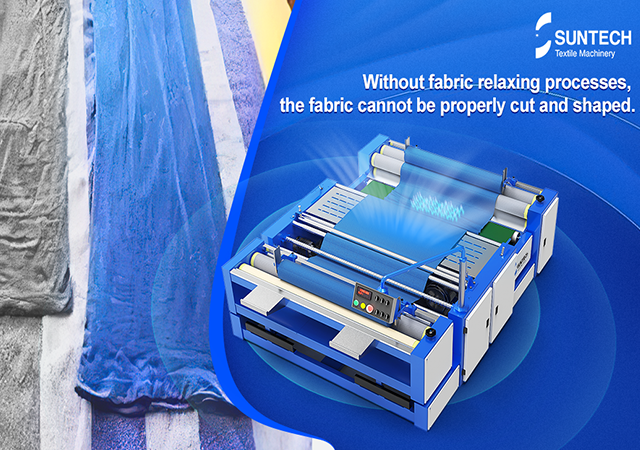Fabric relaxation is a crucial step in the textile manufacturing process, aimed at alleviating stress and deformation in fabrics, thereby enhancing their quality and visual appeal. The use of fabric relaxing machines is prevalent in processing various materials such as silk, linen, cotton, polyester, and nylon, serving both pre-processing and post-processing purposes. These machines play a significant role in the textile and garment manufacturing industries by improving fabric quality, comfort, and reducing production losses and waste.
How Fabric Relaxing Machines Work
Fabric relaxing machines operate by positioning the fabric within a spacious frame and utilizing diverse transmission mechanisms to allow the fabric to relax. This process reduces internal stress and deformation, which is critical for maintaining the fabric's integrity and appearance. These machines offer adjustable relaxation levels and durations tailored to specific fabric materials and processing needs.
Traditionally, fabric relaxing machines employ various technologies that differ based on the type and manufacturer. Most machines use a combination of heat, moisture, and mechanical action to relax the fabric effectively. The two common types of fabric relaxation methods are steam relaxation and a blend of heat and mechanical action.
Types of Fabric Relaxation Methods
Steam Relaxation:
The fabric passes through a chamber where it encounters steam, which induces relaxation and improves fiber flexibility.
The fabric is then guided through the machine via rollers, ensuring even distribution of moisture and heat.
Adjustable tension settings allow for achieving the desired level of fabric relaxation.
Heat and Mechanical Action:
The fabric is fed through a series of rollers that apply heat and pressure, causing the fibers to relax.
Some machines incorporate a moisture application system to introduce water or steam during the rolling process.
Both methods aim to alleviate tension from the fabric, making it easier to handle and preventing puckering or distortion during manufacturing. By combining heat, moisture, and mechanical action, fabric relaxing machines consistently deliver reliable results across various fabric types and applications.

Advancements in Fabric Relaxation: The SUNTECH ST-FRM-VI(P)
The ST-FRM-VI(P) by SUNTECH Textile Machinery represents a significant advancement in fabric relaxing technology. This versatile machine performs several critical functions to optimize fabric processing:
- Tension-Free Feeding: It operates by unwinding fabric from two separate rollers driven by independent motors and inverters.
- Air-Flotation Zone: This zone effectively relaxes the fabric, reducing processing time.
- Automatic Edge-Alignment System: Maintains precise alignment with an error margin of just 6mm.
- Vibrate Conveyor: Release Fabric Tension by Shaking.
- Accurate Length Counting: Ensures counting errors are no more than 0.1m/km, measured in yards or meters.
- Optional Measuring Devices: Includes an Automatic Width Measuring Device for online measurements and an Automatic Weight Device for precise fabric weight measurement up to 1000-2000kgs.
SUNTECH introduced the upgrade to the ST-FRM-VI(P), such as a vibrating table. This enhancement works in conjunction with the airflow in the air duct to gently shake the fabric, releasing any remaining tension. This innovation ensures that the fabric is completely free from tension, preventing shrinkage during subsequent processing.
SUNTECH Textile Machinery: Commitment to Excellence
Since its establishment, SUNTECH Textile Machinery has been dedicated to the development, manufacturing, and global distribution of premium textile machinery. Their extensive portfolio includes the STelego and Fabric Make-up Machine series, known for their exceptional reliability and productivity. Notably, the flagship ST-BS (Beam Stacker) has attained a prominent market share within the industry.
SUNTECH's continuous innovation and commitment to excellence make its fabric relaxing machines a vital asset in the textile manufacturing process, ensuring high-quality fabric production with minimized waste and enhanced efficiency.




